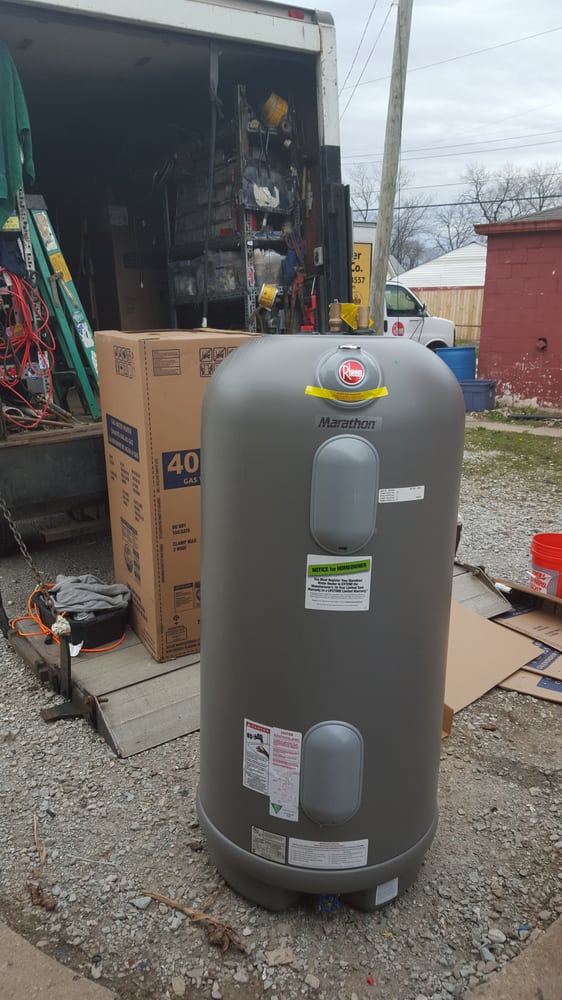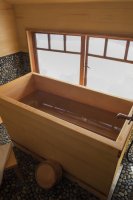Eden
New Member
When we bought our house 20 some odd years ago we figured we'd go tankless when we had to replace our aged and limping electric 50 gallon hot water heater, but lo and behold with a few minor repairs, it's held out all these years.... Now we've got our soaking tub in place we're once again considering the change, but a little closer look makes me wonder whether or not it's a good idea.
We have gas into the house and a few years ago when we had to have the furnace replaced we had a stub put in place for the eventuality of a gas tankless water heater too.
The particulars
There are only two of us in the house and we don't have super high water usage. It's highly unlikely we would have one person running a bath and another wanting to shower at the same time, same goes for laundry, dishes etc.
Our current hot water heater is an electric 50 gallon.
Our heater is a gas force air furnace and it has a condenser and pump that the water heater could be tied into.
We live in Seattle and the city water is very good and pretty soft.
In Seattle electricity is pretty cheap because of all of our hydro. We currently use a timer on the water heater so that it only heats in the morning and evening or if we turn it on, so we know it might not mean much energy savings, but might it actually be more to use the tankless than our current setup?
We do have a soaking tub - I'm not sure exactly how much it holds but my current routine to fill it goes like this... I fill it to the point at which the water turns cool, turn it off and cover it (it's a Japanese cedar tub and holds it's heat amazingly well) I wait about 15 or 20 min and then fill it up the rest of the way. We like to end up with water that is about 99-100 degrees in the tub. Full it will hold this temperature easily for the time it takes the two of us to each have a nice soak. Covered up overnight it only drops to about 84F. (water is generally kept in a wooden tub as complete drying could crack the tub- we completely empty it to wipe it down several times a week, but on many nights I simply drain it 2/3rds and top it up with fresh hot water)
It would be nice to be able to fill the tub all in one go and to get rid of the bulky tank in the basement, but I'm wondering if a tankless heater would be more trouble and cost than it would be worth and will it even work well for this application? Will it make showering awful.. we don't use the too shower much, but still would want to have a comfortable spritz when needed.
Another thing we can consider - replacing our regular water heater with another tank style one and using a small point of use electric tankless as a booster- the wall behind the tub is open right now (and we can leave an access panel in it if need be)
We have gas into the house and a few years ago when we had to have the furnace replaced we had a stub put in place for the eventuality of a gas tankless water heater too.
The particulars
There are only two of us in the house and we don't have super high water usage. It's highly unlikely we would have one person running a bath and another wanting to shower at the same time, same goes for laundry, dishes etc.
Our current hot water heater is an electric 50 gallon.
Our heater is a gas force air furnace and it has a condenser and pump that the water heater could be tied into.
We live in Seattle and the city water is very good and pretty soft.
In Seattle electricity is pretty cheap because of all of our hydro. We currently use a timer on the water heater so that it only heats in the morning and evening or if we turn it on, so we know it might not mean much energy savings, but might it actually be more to use the tankless than our current setup?
We do have a soaking tub - I'm not sure exactly how much it holds but my current routine to fill it goes like this... I fill it to the point at which the water turns cool, turn it off and cover it (it's a Japanese cedar tub and holds it's heat amazingly well) I wait about 15 or 20 min and then fill it up the rest of the way. We like to end up with water that is about 99-100 degrees in the tub. Full it will hold this temperature easily for the time it takes the two of us to each have a nice soak. Covered up overnight it only drops to about 84F. (water is generally kept in a wooden tub as complete drying could crack the tub- we completely empty it to wipe it down several times a week, but on many nights I simply drain it 2/3rds and top it up with fresh hot water)
It would be nice to be able to fill the tub all in one go and to get rid of the bulky tank in the basement, but I'm wondering if a tankless heater would be more trouble and cost than it would be worth and will it even work well for this application? Will it make showering awful.. we don't use the too shower much, but still would want to have a comfortable spritz when needed.
Another thing we can consider - replacing our regular water heater with another tank style one and using a small point of use electric tankless as a booster- the wall behind the tub is open right now (and we can leave an access panel in it if need be)
Last edited:


